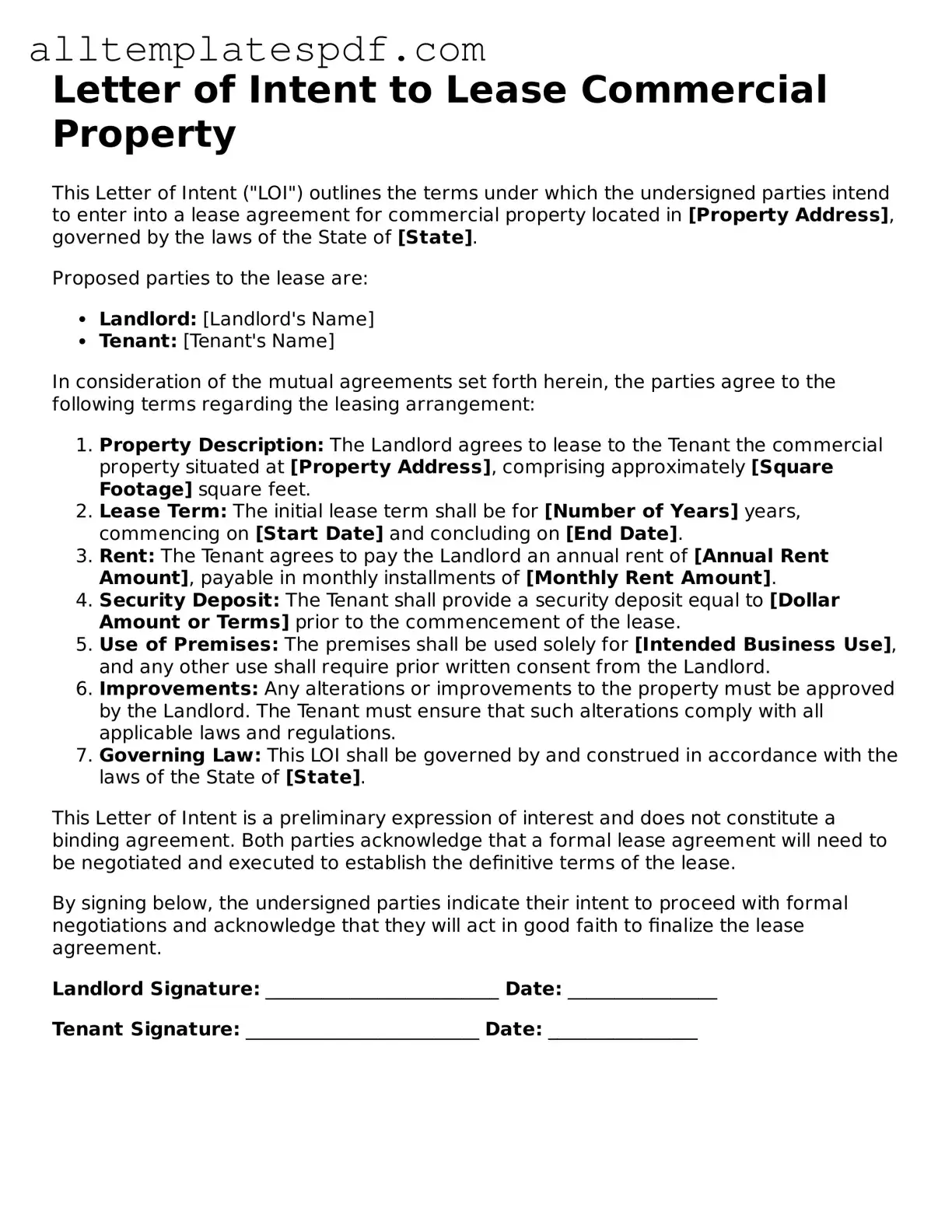Filling out a Letter of Intent to Lease Commercial Property can be a significant step in securing a business location. However, many individuals make common mistakes that can lead to misunderstandings or complications later on. One prevalent error is failing to provide complete information. Incomplete details, such as missing contact information or business structure, can hinder communication and delay the leasing process. It is crucial to ensure that all relevant fields are filled out accurately.
Another mistake often seen is not specifying the intended use of the property. Clearly outlining how the space will be utilized helps landlords understand the suitability of their property for your business. Without this information, landlords may hesitate to proceed, fearing potential conflicts with zoning laws or property restrictions.
Additionally, many individuals overlook the importance of negotiating terms before submitting the letter. Entering into a lease agreement without discussing critical elements such as rent, duration, and maintenance responsibilities can lead to unfavorable conditions. Taking the time to negotiate terms can help establish a more beneficial relationship between the tenant and the landlord.
Another common oversight is neglecting to include contingencies. These clauses can protect tenants from unforeseen circumstances, such as failing to secure financing or needing to conduct inspections. Including contingencies in the letter ensures that both parties understand the conditions under which the lease may be reconsidered or terminated.
Lastly, many people fail to review the document thoroughly before submission. Typos, grammatical errors, or unclear language can create confusion and misinterpretations. Taking the time to proofread the letter can help convey professionalism and attention to detail, which is essential in establishing trust with the landlord.
